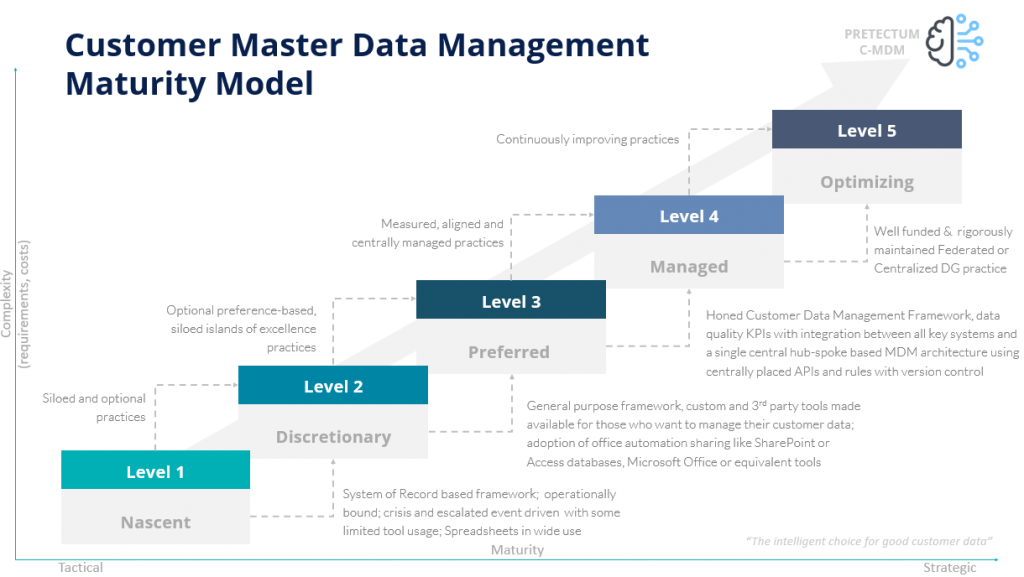Assuming you have the executive endorsement, a budget, or a commitment from the business to improve customer data quality, the first thing you will want to do is determine the scope of work that you need to undertake as part of your customer-related data governance project.
In order to achieve effective horizontal integration with all the business units within the organization, the scoping of your MDM needs to gather the requirements of all employees and interest groups that would be expected to work with or be dependent on a new and unified approach to customer master data management. The use of a standardized technical framework will help in framing whether the solution meets the needs of each business area.
Industry analysts, Gartner, have described MDM as a technology-enabled discipline in which business and IT work together to ensure data uniformity, data accuracy, data stewardship, semantic consistency, and accountability of centrally managed enterprise master data assets.
The reality is that with cloud-based systems being more prevalent today, and IT outsourced, the dependence on IT as a function for these types of solutions, is often considerably reduced. The greater focus today needs to be on facets like form and fit relative to specific business goals, security, compliance, vendor solution resiliency, dependability, and availability.
Part of the definition of the requirements needs to dwell on pushing toward master data as a consistent and uniform set of identifiers and extended attributes for the customer. As such the current maturity of customer master data management needs to be considered in the scoping.

Maturity levels may vary across departments from nascent to discretionary, preferred, managed, or optimizing. Technology may play a significant existing role in these maturities or may not be present at all. The terms used to describe these different levels of maturity may also vary from vendor to vendor and analyst to analyst.
The absence of an overarching Data Strategy may hamper the scoping activity or the approach to data management may be dictated by various systems, electronic or process-based. These should be considered as part of the scoping process. Standards like BS, TUV, ISO, and the like will already have their influence felt and things need to appropriately align. Industry compliance regulations like GDPR, local data privacy, HIPAA, and the like will also play a role.
Without a data management strategy though, the default of an IT implementation of MDM may cost a great deal in terms of time and effort to align the technology with the way the business needs to work and vice versa. Accordingly, formulating a data management strategy for customer data management at least should be considered important.
You’ll also need to look at the existing tools and methods that the various stakeholders use and determine why those tools are in use, their strengths and weaknesses, and their relative efficacy in solving various data management issues.
So in summary, Customer MasterData Management scoping should cover these basic activities
- Identify the key stakeholders and decision-makers
- Identify sources and target systems and prioritize these
- identify and inventory all standards, policies, and approaches that need to be included
- Identify the tools and methods that are currently in use and evaluate their utility
- Establish an understanding of where your business is in the data maturity continuum
Leverage all this understanding as part of the process of then determining what the outcomes are that you would seek to arrive at and obtain consensus regarding what really matters to stakeholders.
In the absence of a formalized data management strategy, formulate this knowledge and understanding into some sort of data management manifesto. A document that you will be able to share with partners and vendors to help inform them of your intentions and needs.
To find out more about how the Pretectum CMDM could address your needs for Customer Master Data Management even at this early stage, why not contact us?


